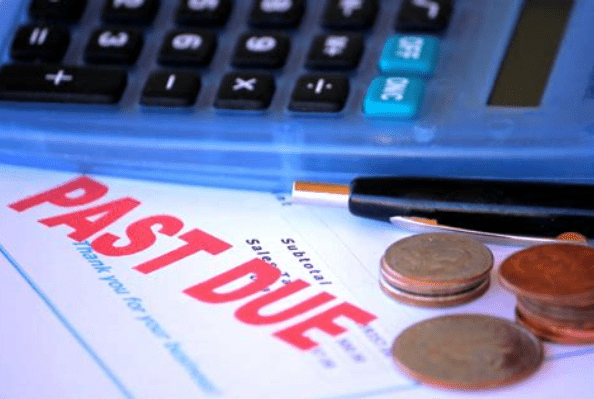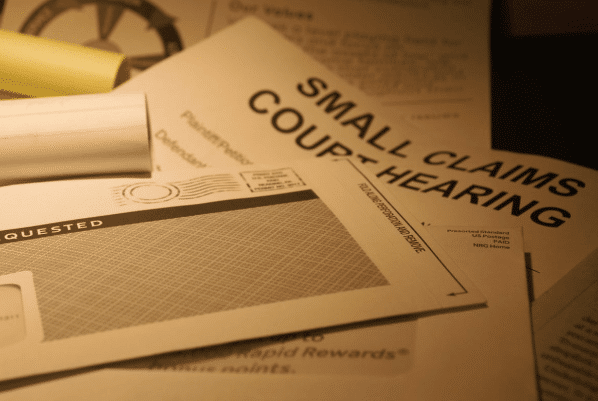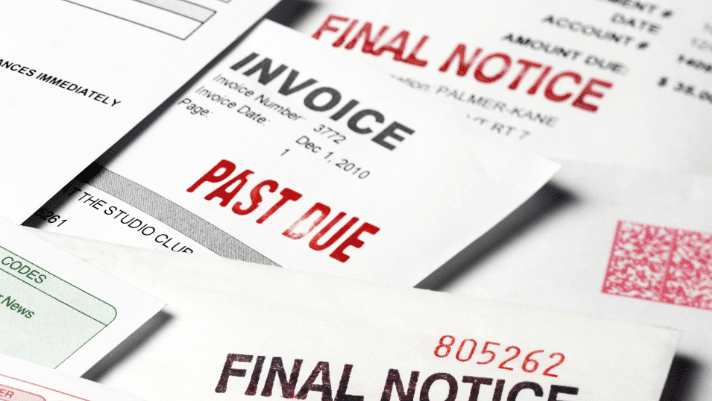In California, you have 30 days to respond to a debt lawsuit. Filing an Answer is crucial, costing $225-$450 depending on factors like the amount owed and the court. ZumaZip streamlines the process, allowing you to draft and file your Answer online within minutes, ensuring you meet the deadline and protect your rights.
“I love getting sued for a debt,” said no one ever. It’s a stressful situation, but with the right tools and knowledge, you can navigate it successfully.
Navigating a debt collection lawsuit in California can be overwhelming, but ignoring the Summons can lead to even more financial challenges. Responding to the Summons is crucial, regardless of your financial situation. This article will guide you through the process of responding to a debt collection lawsuit in California, providing essential information on state deadlines, required forms, and the steps involved.
You have 30 days to respond to a Summons for debt in California
In California, you typically have 30 days to respond to a debt Summons, which includes weekends and court holidays. However, if you didn’t receive the lawsuit documents directly, you’re given 40 days to respond. This situation may arise if the Summons and Complaint were served to someone else in your household or at work, sent to an old address, or mailed to you. Before counting these additional ten days, ensure the plaintiff’s documents indicate substitute service or contact the creditor’s lawyer to confirm.
It’s important to be aware of these exceptions regarding deadlines in California.
Use these California Answer forms to respond to a Summons
Responding to a debt collection Summons in California can be confusing, especially when figuring out which forms to use. ZumaZip simplifies this process by providing you with multiple options to complete the correct form.
With ZumaZip’s free Answer form, you can respond to a debt collection lawsuit in California quickly and easily. It takes less than 15 minutes to fill out and has a proven track record of success in getting cases dismissed. Plus, it’s completely free!
California Answer to Summons forms
Here are other forms provided by the state.
- The General Denial Form – Use this form if you disagree with the entire complaint. This form doesn’t provide support for affirmative defenses.
- Answer Form – Use this legal form if you disagree with a section or agree with the entire complaint.
If you decide to use the state forms, you can use these official instructions to fill out the forms. ZumaZip’s Answer is free and easy to fill out, and no instructions are needed.
Follow these steps to respond to a debt collection case in California
Responding to a debt collection case in California involves several key steps. First, carefully review the Summons and Complaint documents you received, which notify you of the lawsuit and outline the plaintiff’s claims against you. Then, follow these three steps to respond effectively:
- Answer each claim listed in the complaint: Take the time to address each allegation in the Complaint document. You can either admit to, deny, or state that you lack sufficient information to respond to each claim.
- Assert your affirmative defenses: Consider any affirmative defenses you may have, such as the statute of limitations, improper service of process, or lack of standing on the plaintiff’s part. Clearly assert these defenses in your response.
- File the Answer with the court and serve the plaintiff: Prepare your Answer document, ensuring it is completed accurately and includes all necessary information. File the Answer with the court within the specified deadline, typically 30 days from the date you received the Summons and Complaint. Additionally, serve a copy of your Answer on the plaintiff or their attorney.
By following these steps and responding promptly to the Summons and Complaint, you can effectively address the debt collection lawsuit in California.
If you haven’t been sued yet, use ZumaZip’s Debt Validation Letter to fight debt collectors.
1. Answer each issue of the Complaint
When responding to the Complaint in a debt collection case in California, it’s important to address each issue raised by the plaintiff. Here’s how you can effectively respond:
- Admit, Deny, or Deny Due to Lack of Knowledge: For each numbered paragraph in the Complaint, carefully consider whether you admit to, deny, or lack sufficient knowledge to respond to the claim. Admitting means you agree with the claim, denying means you disagree or dispute the claim, and denying due to lack of knowledge indicates you cannot confirm or deny the claim based on the information provided.
- Choose the Appropriate Response: Select the option that best aligns with your understanding of the facts and circumstances surrounding the debt. Deny allegations that are inaccurate or untrue, especially if you believe the debt is not valid or has expired.
- Be Strategic: Keep in mind that denying allegations can place the burden of proof on the plaintiff to provide evidence supporting their claims. By denying as many allegations as possible, you may compel the plaintiff to substantiate their case, potentially weakening their position.
ZumaZip can help you respond in less than 15 minutes—for free!
By following these guidelines and accurately responding to each issue raised in the Complaint, you can effectively assert your position and defend against the debt collection lawsuit in California.
2. Assert affirmative defenses
When responding to a debt collection lawsuit in California, it’s crucial to assert affirmative defenses to protect your legal rights and interests. Here are some common affirmative defenses you may consider including in your Answer document:
- Identity Theft or Mistaken Identity: Assert that the debt account in question does not belong to you due to identity theft or mistaken identity.
- Cancellation of Debt: Argue that the debt was canceled or discharged, relieving you of any obligation to the creditor.
- Expired Statute of Limitations: Claim that the statute of limitations on the debt has expired, meaning the creditor is no longer legally entitled to pursue collection action.
- Payment or Settlement: Assert that the debt has already been paid in full, settled, or otherwise discharged, rendering the creditor’s claim invalid.
- Partial Payment: Argue that you have made partial payments towards the debt, reducing the amount owed or fulfilling your obligation.
- Co-Signer Obligations: If applicable, assert that you were a co-signer on the debt but were not adequately informed of your obligations, thereby challenging the validity of the creditor’s claim against you.
ZumaZip makes it easy to make the right defense, the right way.
By including these affirmative defenses in your Answer document, you provide legal grounds for disputing the creditor’s claims and defending against the debt collection lawsuit. Utilizing ZumaZip can help ensure that you assert the appropriate defenses effectively and in compliance with California legal requirements. Remember, while financial hardship is not a valid legal defense, strategic affirmative defenses can significantly impact the outcome of your case.
3. File the answer with the court and serve the plaintiff
When filing an Answer to respond to a Summons for debt collection in California, it’s essential to follow the proper procedures outlined by the court. Here’s a step-by-step guide to help you through the process:
- Prepare Your Answer: Print two copies of your completed Answer document, ensuring that you have responded to each claim in the Complaint and asserted any affirmative defenses.
- Submit to the Court: Mail one copy of your Answer to the court where the lawsuit was filed. The court’s address should be provided in the Summons and Complaint documents you received. Make sure to include any required filing fee with your submission.
- Serve the Plaintiff’s Attorney: Mail the second copy of your Answer to the attorney representing the plaintiff (creditor). The attorney’s address should be indicated on the Summons or Complaint.
- Payment of Filing Fee: If there is a filing fee required by the court, ensure that you include this fee with your submission to the court. The amount of the filing fee may vary depending on the court and the amount of debt involved in the lawsuit.
ZumaZip can file your Answer for you and serve the opposing party.
By following these steps and submitting your Answer in a timely manner, you fulfill your legal obligation to respond to the Summons for debt collection in California. It’s important to adhere to the specified deadlines and procedures to protect your rights and interests in the legal process.
Pay the California Answer filing fee
California courts charge a mandatory filing fee to file your papers with the courts. Unfortunately, California also charges the highest filing fees in the nation; they range from $225–$435. ZumaZip calculates the fee for you and makes sure it gets to the court. The following is a breakdown of the filing fee across the 58 Counties:
| County | Debt Amount: $0 To $10K | Debt Amount: $10,000.001 To $25K | Debt Amount: $25,000.001 Or More |
|---|---|---|---|
| Riverside | $225 | $395 | $450 |
| San Bernardino | $240 | $380 | $435 |
| San Francisco | $225 | $370 | $450 |
| All other counties | $225 | $370 | $435 |
After filing your response to the Summons for debt collection in California, it’s crucial to serve a copy of your Answer to the plaintiff within thirty days. Here’s how to ensure proper service:
- Send Copy to Plaintiff: Mail a copy of your Answer to the plaintiff or their attorney within the designated timeframe. Make sure the individual who delivers the response fills out a proof of service by mail.
- Complete Proof of Service: The proof of service form verifies that you have properly served the plaintiff with a copy of your Answer. It should include details such as the date and method of service.
- Submit Proof of Service to Court: After confirming delivery of the Answer to the plaintiff, send a copy of the proof of service form to the court. Some courts in California require this document along with your Answer.
ZumaZip simplifies this process by including the proof of service form with your Answer if you choose to file through their platform. This ensures compliance with court requirements and helps streamline the legal process. By adhering to these steps, you fulfill your obligation to serve the plaintiff and provide documentation of service to the court.
Fill out a fee waiver form if you cannot afford to pay the filing fee
In some cases, a person may not have the money to pay the filing fee because they earn a low income. The courts allow you to apply for a waiver. You can qualify for a waiver if:
- You receive public benefits such as food stamps (CalFresh), general assistance, cal-works, and Medi-Cal.
- Your overall income before taxes is less than the amount listed in the waiver form FW-001 section 5b.
- The court concludes that you don’t have the money to pay for your basic needs in addition to the court fees.
If you fall in the above category, make an official request by filling in Form FW-001. The steps to follow as you fill the form are:
- Read the entire document and ensure you understand the requirements.
- Fill out the form as you read each section carefully. Use this instruction form that highlights key areas that need special attention.
- Sign the form in the section labeled penalty of perjury. Ensure the information you enter is truthful and can be verified.
- Print out two copies
- Submit the request to the court clerk, and they will tell you when you will get a response.
If the courts approve your request to waive filing fees for your response to the Summons in California, your documents will be accepted, and the legal process will proceed accordingly. Following this, you have the option to negotiate with the creditor outside of court or proceed with the litigation process.
Should you choose to proceed to court and succeed in the lawsuit, it’s important to note that you may be required to reimburse the waived court fees after receiving compensation. This reimbursement typically occurs after the case has been resolved in your favor. It’s essential to consider this potential financial obligation when deciding on the best course of action for your situation.
Use these other documents to win your debt collection lawsuit
ZumaZip can help you with the next step after answering a Summons and Complaint. You can send our Motion to Compel Arbitration to the creditor, which compels them to follow through with the arbitration clause in the contract. You can also send our Debt Lawsuit Settlement Letter, which requests the creditor to settle the debt out of court. Our customizable documents help you solve your debt issues without a lawyer.
What is ZumaZip?
ZumaZip is a convenient online tool designed to simplify the process of responding to a debt collection lawsuit. It guides users through a series of step-by-step questions to complete the necessary paperwork for their response. Once the forms are completed, users have the option to either print the documents and mail them to the courts themselves or pay ZumaZip to handle the filing process on their behalf. Additionally, users can opt to have an attorney review the document for added assurance.
What is ZumaZip?
ZumaZip is a convenient solution designed to streamline your response to a debt collection lawsuit. Here’s a breakdown of what you can expect when you use ZumaZip:
Firstly, you’ll access our user-friendly web application, which guides you through the process step by step. You’ll be prompted to answer a series of questions related to your specific situation. Once you’ve completed the questionnaire, you have the option to either print out the finalized forms and mail them to the appropriate courts yourself, or you can opt to utilize ZumaZip’s services to file them on your behalf. Additionally, if you choose this option, an attorney will review your document for added peace of mind.
If you’re seeking guidance on how to effectively respond to a debt collection lawsuit, ZumaZip can provide the assistance you need. Feel free to explore our FAQs for more information on what ZumaZip has to offer.
What if I haven’t been sued yet?
If you’ve only received a collections notice, but not a lawsuit, the best way to respond is with a Debt Validation Letter. When a debt collector contacts you in any way, whether it’s by phone or mail, you can respond by formally requesting a debt validation with a Debt Validation Letter . This letter notifies the collector that you dispute the debt and forces them to provide proof you owe the debt. They can’t call you or continue collecting until they provide validation of the debt. This flowchart shows how you can use a Debt Validation Letter to win.
Get started with a Debt Validation Letter here.
How to Answer a Summons for debt collection in all 50 states
Here’s a list of guides on how to respond to a debt collection lawsuit in each state:
- Alabama
- Alaska
- Arizona
- Arkansas
- California
- Colorado
- Connecticut
- Delaware
- Florida
- Georgia
- Hawaii
- Idaho
- Illinois
- Indiana
- Iowa
- Kansas
- Kentucky
- Louisiana
- Maine
- Maryland
- Massachusetts
- Michigan
- Minnesota
- Mississippi
- Missouri
- Montana
- Nebraska
- Nevada
- New Hampshire
- New Jersey
- New Mexico
- New York
- North Carolina
- North Dakota
- Ohio
- Oklahoma
- Oregon
- Pennsylvania
- Rhode Island
- South Carolina
- South Dakota
- Tennessee
- Texas
- Utah
- Vermont; Vermont (Small Claims court)
- Virginia
- Washington
- West Virginia
- Wisconsin
- Wyoming
Guides on how to beat every debt collector
Hey there! Facing off against a debt collector can feel like a daunting challenge, but fear not! We’re here to help you navigate through it all with our handy guides designed to assist you in beating every debt collector you encounter. Whether you’re facing a new lawsuit or dealing with a persistent collector, we’ve got your back. Stay positive, stay informed, and let’s tackle this together!
- Absolute Resolutions Investments LLC
- Accredited Collection Services
- Alliance One
- Amcol Clmbia
- American Recovery Service
- Asset Acceptance LLC
- Asset Recovery Solutions
- Associated Credit Services
- Autovest LLC
- Cach LLC
- Cavalry SPV I LLC
- Cerastes LLC
- Colinfobur
- Covington Credit
- Crown Asset Management
- CTC Debt Collector
- Cypress Financial Recoveries
- Delanor Kemper & Associates
- Eagle Loan of Ohio
- Educap
- Estate Information Services
- FIA Card Services
- Forster & Garbus
- Freshview Solutions
- Fulton Friedman & Gullace LLP
- Harvest Credit Management
- Howard Lee Schiff
- Hudson & Keyse LLC
- Integras Capital Recovery LLC
- Javitch Block
- Jefferson Capital Systems LLC
- LVNV Funding
- Mannbracken
- Mariner Finance
- Medicredit
- Michael J Adams PC
- Michael J Scott
- Midland Funding LLC
- Mullooly, Jeffrey, Rooney & Flynn
- Mountain Land Collections
- MRS Associates
- National Collegiate Trust
- Nationstar Foreclosure
- Northstar Capital Acquisition
- NCEP LLC
- NRC Collection Agency
- OneMain Financial
- Palisades Collection LLC
- Pallida LLC
- Paragon Revenue Group
- Pinnacle Collections Agency
- PMAB LLC
- Portfolio Recovery Associates
- Provest Law
- PYOD LLC
- Reunion Student Loan Finance Corporation
- Revenue Group
- Regents and Associates
- RSIEH
- Salander Enterprises LLC
- Second Round Sub LLC
- Security Credit Services
- Sherman Financial Group
- Suttell and Hammer
- T-Mobile
- Transworld Systems
- Tulsa Teachers Credit Union
- UCB Collection
- Velo Law Office
- Velocity Investments
- Waypoint Resource Group
- Weinberg and Associates
- Wolpoff & Abramson
Settle your medical debt
Having a health challenge is stressful, but dealing medical debt on top of it is overwhelming. Here are some resources on how to manage medical debt.
- Am I Responsible for My Spouse’s Medical Debt?
- Do I Need a Lawyer for Medical Bills?
- Do I Need a Lawyer to Fight Medical Bill Debt?
- Does Bankruptcy Clear Medical Debt?
- How Much Do Collection Agencies Pay for Medical Debt?
- How to Find Medical Debt Forgiveness Programs
- Is There a Statute of Limitations on Medical Bills?
- Medical Debt Statute of Limitations by State
- Summoned to Court for Medical Bills — What Do I Do?
- Summoned to Court for Medical Bills? What to Do Next
Stop calls from Debt Collectors
Do you keep getting calls from an unknown number, only to realize that it’s a debt collector on the other line? If you’ve been called by any of the following numbers, chances are you have collectors coming after you, and we’ll tell you how to stop them.



































